3 Tricks to get you more grip from your RC – Where to move Weight on Chassis – how to control Chassis Flex – Aerodynamics for the body and wing – Useful links
This site contains affiliate links. When you click links, Especially with the word (Ad) you Help the site Grow. The site may receive a commission, at no additional cost to you!
#1 Moving Weight on Chassis
This might be the most helpful tuning tip other than tires. Most people already know moving weight forward/backward or side-to-side to gain grip in that area but another beneficial Trick is actually to move the weight up or down. I cover some of this in Center of Gravity Tuning. But if your goal is to only gain Grip moving weight higher on the Chassie will be more beneficial.
Weight high on chassis – allows more weight to transfer. More weight/grip on the outside tire in turn. More weight/grip on the back tires under acceleration. More weight/grip on the front tires under braking. For this, you can run less weight and transfer more weight/grip simultaneously.
Weight low in the chassis – routinely gives more benefits overall but not in the grip department. You do however get more even pressure and a larger contact patch from the tire to the ground. But this equals more friction and rotation – You need weight for grip to technically occur.
Notes: If the car becomes unstable (for example – flipping – getting on 2 wheels – losing control at high-speed). You will need to get the weight lower in the chassis to maintain control. Control is more important than grip – especially if your tires are in the air there will be zero grip on that tire. Keep in mind, that inside tire lift with control can sometimes be faster – just make sure you can maintain control.
Need more help here are some great links…
rctech.net – Chassis Weight Distribution- Where to Add Weight
pressreader.com – Adjust Weight Distribution
#2 Chassis Flex
This is a controversial topic for some. A great number especially from full-size car racing will tell you that you want little flex as possible. This is mostly true for “full-size cars” – they usually have too much factory chassis flex and more weight to deform the chassis. But chassis flex works very similar to suspension (some say like a fifth spring) – It helps keep the tire planted. Some will argue this job should be dedicated to suspension only. The problem with this is you will need to add droop and/or a softer spring to make up the difference (at times) – This will lower response time and lower grip Vs giving the chassis a bit more flex. Yes, more chassis flex will lower response time but not as much as, if you had to switch to a softer spring.
More flex on chassis – allows you to run a harder suspension (with less movement) while keeping the tire more planted. A harder suspension generated more grip. (yes, a soft suspension will transfer more weight but soak up the transfer of weight to the tire) if you move weight (like in #1) you should get all the weight transfer you need.
Less flex on chassis – would be the best in a perfect world but in a perfect world, you would not need suspension as well. Generally, (if you have your suspension dial) stiffen up the chassis if you want more rotation and response.
Note: Don’t go overboard with flex in the chassis. Chassis flex is not as constant as a set spring rate – for this, you can get inconsistent flex using the chassis as a 5th spring – especially if you add too much.
Another thing to keep in mind – you only want flex side-to-side (twist flex) and not front-to-back, especially on 4WD. You will see many cars with a single bar (center brace kit) to stop front-to-back flex while maintaining side-to-side flex.
Need more help here are some great links…
sodialed.com – Chassis Flex
rctech.net – Tuning with chassis flex
#3 Body and/or wing
Not really the chassis – but kinda. The body is more than just for looks. It can have a big impact on how the car drives. The problem with buying a new body is you really can’t tell if it’s going to help or hurt. You kinda just need to try one or two (different types) and see if it works for you. Note: I tend to have better luck with JConcepts.
If your RC has a wing…
The wing and body go hand and hand. The wing is a bit simpler to understand. The bigger it is the more force it’s able to create – more pitch plus size equals more downforce being pushed on the chassis. Like on top, a softer spring soaks up some of the force being pushed down to the tire. Generally, if you run more downforce you need a stiffer spring – to gain full advantage of the force being pushed down. note: The wing fins help with straight-line stability.
Need more help here are some great links…
rctech.net – body tuning tips
sodialed.com – Aerodynamics for Off-Road RC Cars, with Max Mört
Useful links for Chassis Tricks For More Grip…
site.petitrc.com – Forward Traction
rctech.net – Traction Rolling
rcottawa.com – TOURING CAR CHASSIS SETUP TIPS by Richard Chang

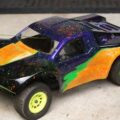
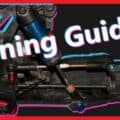

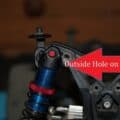
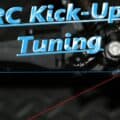
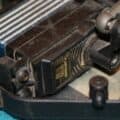



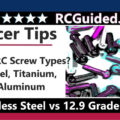
Pingback: (Top 5) Slash 4x4 Upgrades For Racing | 2023 | RC Guided
Pingback: Simplified Suspension Tuning Guide - RC Guided